Company news
Company news

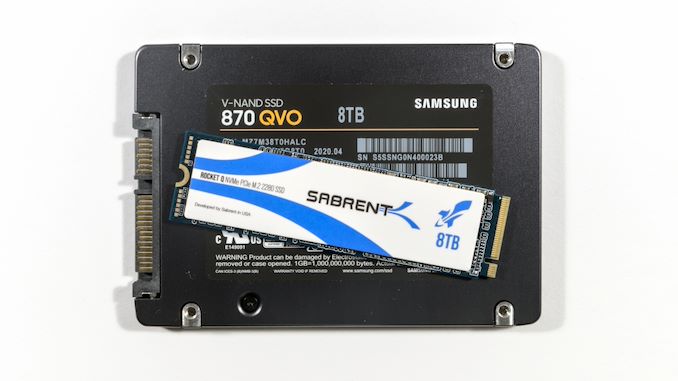
Flash memory prices have been on a downward trajectory for years. A decade ago, this trend was helping SSDs establish a foothold in the consumer market—largely for enthusiasts. Now, SSDs have taken over as the default storage medium for consumer PCs and further advances in flash memory are no longer pushing consumer SSDs into new product segments. Instead, cheaper flash is driving an increase in SSD capacity.
That growth in drive capacity has not been steady. For both technical and marketing reasons, consumer SSD capacities stick close to powers of two. The first 2TB consumer SSDs started to show up in 2015, and now 2TB options are common across all the SSD market segments. 4TB drives started to show up in 2018 but are still quite rare, and this year we've seen the first 8TB consumer SSDs.
Today we're looking at the first two consumer-oriented 8TB SSDs. The 8TB Samsung 870 QVO is a SATA drive from the brand that has been at the forefront of the past several capacity increases and leads the SSD market by most other measures. The other drive is the 8TB Sabrent Rocket Q, a M.2 NVMe drive from a brand that's working to stand out from the crowd of many other Phison partners. Unsurprisingly, both of these drives use four bit per cell QLC NAND flash memory which offers the lowest cost per GB and the highest per-die capacities currently available. QLC NAND generally puts SSDs into an entry-level market segment, but due to their extreme capacities these 8TB SSDs are still some of the most expensive drives in the consumer SSD market.
Sabrent Rocket Q 8TB
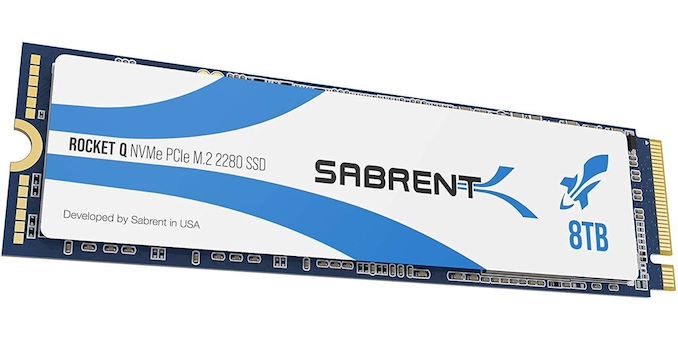
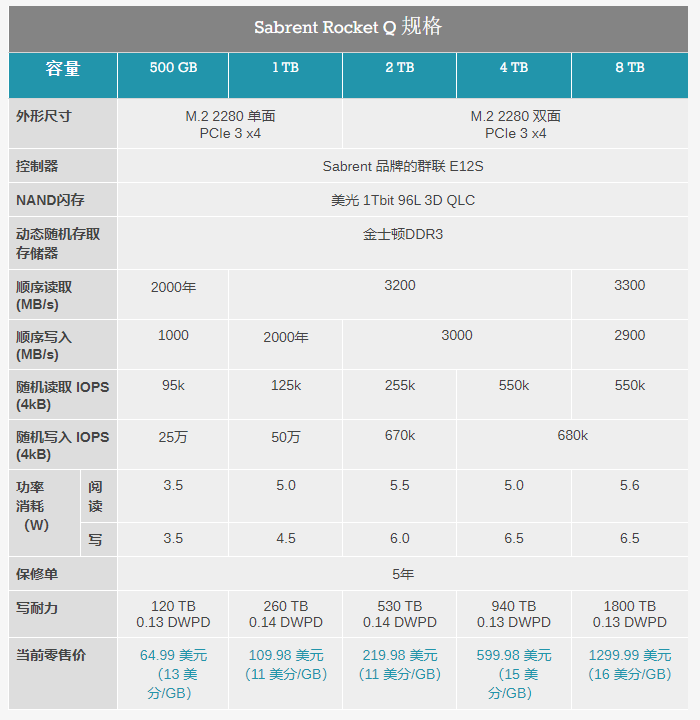
The Sabrent Rocket Q is a bit unusual among QLC NVMe SSDs, and not just because it offers such high capacities. Most consumer QLC SSDs use fairly low-end SSD controllers rather than let the performance potential of a high-end controller be wasted on slow QLC NAND. But the Rocket Q uses the Phison E12, a familiar mainstay of the high-end NVMe market segment (but seen here in the more compact E12S packaging). This means the Rocket Q has an 8-channel controller at its disposal rather than just four channels, and that helps immensely at the higher capacities where there's enough flash to compensate for the low performance of QLC NAND.
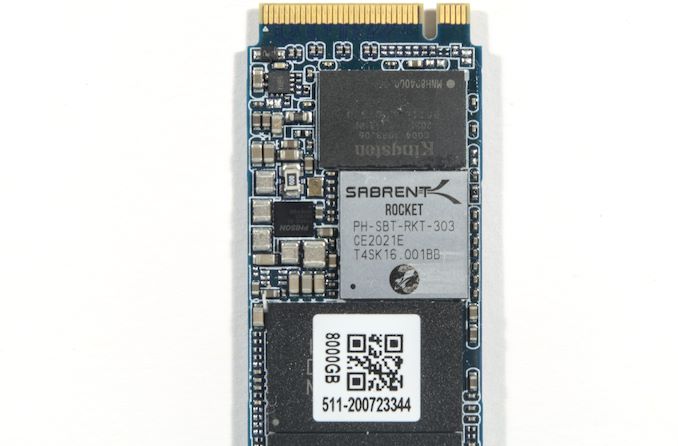
The Rocket Q does cut corners a bit by using just one fourth of the DRAM we usually see on mainstream SSDs. That hurts a bit at the lower capacities (though nowhere near as much as a fully DRAMless design would), but is much less of a problem for this 8TB model: 2GB of DRAM is still plenty for the SSD to handle any typical consumer workload.
The Rocket Q lineup goes from 500GB to 8TB, but we generally consider QLC drives smaller than 1TB to be a poor alternative to DRAMless TLC drives. That's even more true for the Rocket Q, because the 500GB model can only use half of the Phison E12's 8 channels.
Sabrent has also introduced the Rocket Q4 as a partial successor. This uses the Phison E16 controller and brings PCIe 4 support and improved performance. However, the E16 is not yet (and may never be) available in a small package size like the E12S controller, so it is not yet practical for Sabrent and Phison to squeeze 8TB of QLC onto a PCIe gen4 M.2 drive.
Samsung 870 QVO 8TB
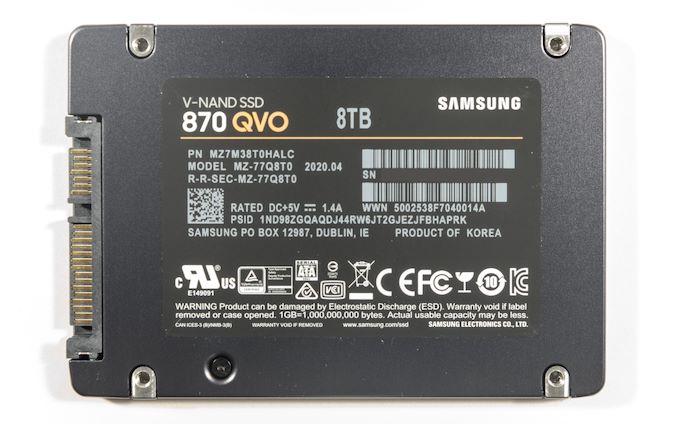
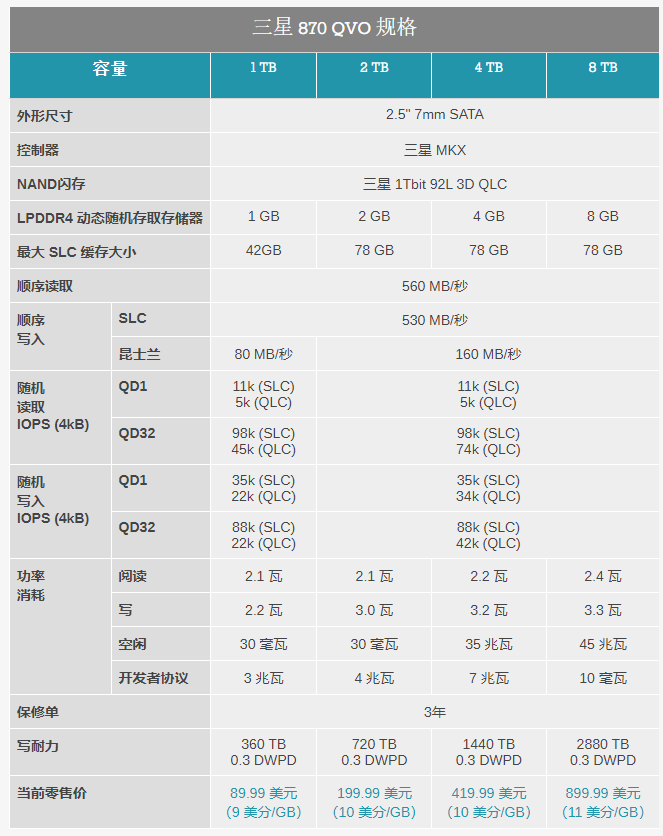
We reviewed the Samsung 870 QVO when it first launched, but the 8TB capacity arrived a bit later. Other than the higher capacity, there's not much new to say about the 8TB model of their second-generation QLC SSD. It has twice the NAND and twice the DRAM and twice the total write endurance, but the same performance ratings and SLC cache sizes as the 2TB and 4TB models. Samsung's SATA SSD controller doesn't offer much potential for higher performance once all channels are populated with at least two NAND dies.
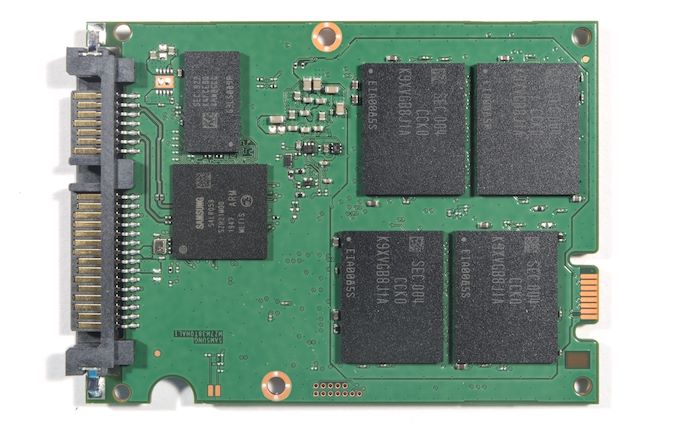
Compared to the Rocket Q, the Samsung 870 QVO has higher write endurance ratings both in terms of drive writes per day and total TB written. However, the Rocket Q comes with a 5 year warranty and the 870 QVO only has a 3 year warranty. The Samsung 870 QVO is far cheaper at these high capacities; NVMe SSD controllers are only a little bit more expensive than SATA SSD controllers, but lack of competition leaves Sabrent free to charge a much higher price per GB for their QLC NVMe product. Samsung's vertical integration probably helps them maintain decent profit margins even on their more competitively-priced drive.
CATEGORIES
LATEST NEWS
- Samsung Launches Single-Chip uMCP Packages with LPDDR4X DRAM & UFS 3.0 Storage 2021-08-20
- Samsung Starts Production of 16 GB LPDDR5-5500 for Smartphones 2021-08-20
- QLC Goes To 8TB: Samsung 870 QVO and Sabrent Rocket Q 8TB SSDs Reviewed 2021-08-20
- Samsung Introduces 870 EVO SATA SSDs: 128L TLC With an Updated Controller 2021-08-20
- The Samsung 870 EVO (1TB & 4TB) Review: Does the World Need Premium SATA SSDs? 2021-08-20